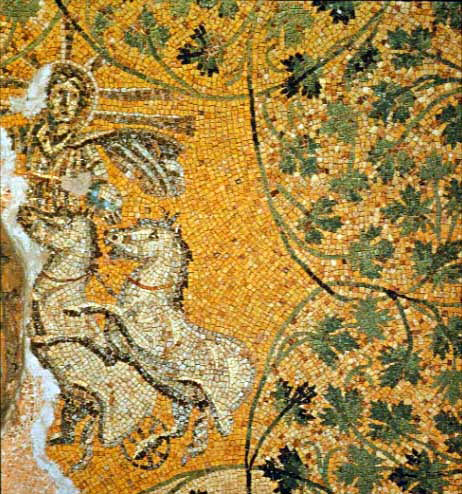In this age of commercialization, it can be difficult to find true symbols of the season. After all, Santa himself is a spokesman for one of the largest department stores in the United States. And Rudolph, that iconic red-nosed reindeer, was created by Montgomery Ward, another large American retailer. A closer look at the Nutcracker and his battalion of wooden soldiers suggest that the figures and symbols that seem to get closest to the meaning of the holiday are those that are somewhat peripheral.
The Nutcracker is a character from The Nutcracker and the King of Mice written by E.T.A. Hoffman in 1816. In this holiday tale, a family—the Stahlbaums—is preparing to celebrate Christmas with an annual party. The family's two children, Marie and Fritz, are fortunate enough to have a talented godfather: a deft clockmaker and tinkerer, he has often gifted the children with wonderfully unique toys. This particular Christmas he builds a fantastic castle with figures that move, but as the motions are repeated the children tire of the toy quickly. Marie, however, takes a Nutcracker also built by the godfather for her own, which prompts her jealous brother to use it to attempt to crack a too large nut and the Nutcracker's jaw is fractured. Marie is heartbroken and binds the injury with her ribbon. While keeping watch over her charge, the clock strikes midnight, and the Nutcracker and the other toys come to life to face a seven-headed mouse king. The army of mice nearly overtake the Nutcracker and his followers, but Marie saves the day by throwing her shoe at a group of mice who attempt to carry the Nutcracker away.
There are subsequent confrontations between the mice and the Nutcracker and Marie. We learn that the Nutcracker is a cursed prince, trapped in a misshapen form because his uncle created the traps that first killed the children of the Queen of the Mice. He was betrayed by the princess whom he strove to save from another curse issued Queen of Mice. The princess declares him too ugly to marry and banishes him. Marie ultimately learns this story and vows to love and marry him despite his form. This breaks the curse and he transformed into a prince who whisks Marie away to the Doll Kingdom where she is eventually crowned as Queen.
At first glance, this story doesn't seem to really tie into the Christmas season other than its setting. But there are elements that seem to suggest a stronger connection. At its core, this is a story of the triumph of good, of acceptance, and goodwill. The celebration of Christmas also contains these elements in the story of the Nativity: Christ is born in adverse conditions—it is a triumph in the face of the corruption and malevolence. He, Mary, and Joseph count on the acceptance and goodwill of those who offer assistance and come to welcome the child. Of course, Christmas itself is rooted in older practices, specifically festivities that marked the return of the sun—the return of light to a cold world, a readily transferred metaphor to religious motifs.
 |
| Solar personification that some have interpreted as Christ. From Wikipedia |
The stories that stick to the holiday season are the ones that carry these themes. Rudolph's success as a brand is in part rooted in these themes. He too triumphs in the face of adversary, both finds and offers acceptance, and models goodwill. These elements have come to represent the ethos of the season and they are markers that we are trained to look for. Santa represents these ideas, and sells them to us as we hunt for the perfect presents to share our fortune and well-wishes with those we know and love. In his red suit, he reminds us to always be good lest he overlook us in granting returns for our generosity.
In this way, in new forms, the beliefs of those who observed solstice traditions endure, albeit as brightly colored decor. There is much history that has survived the ages; it's just a matter of unpacking it and finding the connections.
Here's hoping the holiday season has been treating you well!
--
Photo by Luis Quintero from Pexels


I have to laugh every time I watch Fantasia (1939 or so) and catch Deems Taylor's introduction to the Nutcracker Suite, where he talks about the ballet: "It wasn't much of a success, and nobody performs it today." Today it's probably the most performed ballet in the country (counting amateur productions) especially around Christmas. We even have a live production every year here in Fairbanks, Alaska.
ReplyDelete